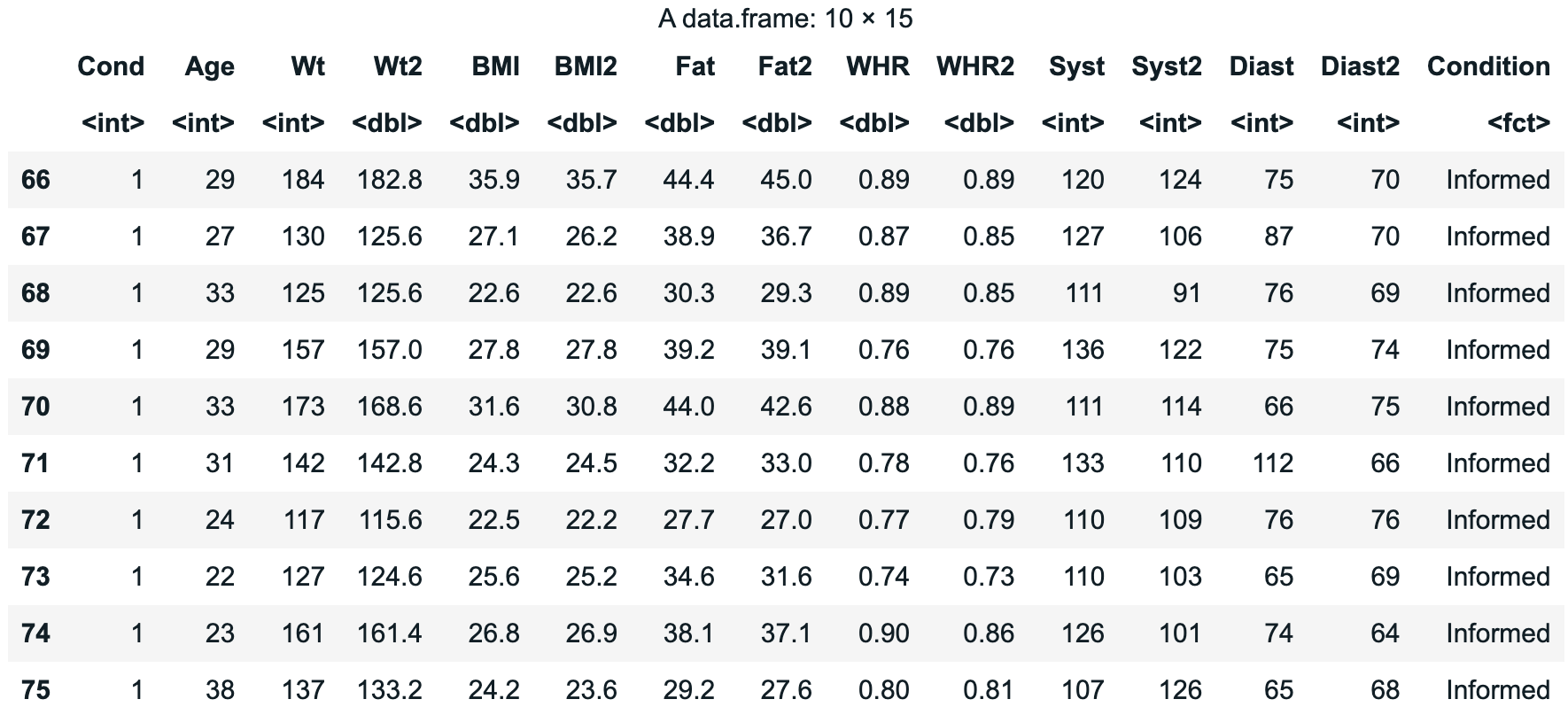tail()
The tail() function is used to get the last rows of a vector or data frame. By default, it will print out the last 6 rows of the object, but you can also specify the number of rows you would like to print out.
The tail() function is similar to the head() function, however, the head() function will print out the first 6 rows (or the number specified), instead of the last 6 rows (see the head() function).
 Example 1:
Example 1:

Example 1:
# Print out the last 6 rows of MindsetMatters
tail( MindsetMatters )
Example output:

 Example 2:
Example 2:
# Print out the last 10 rows of MindsetMatters
tail( MindsetMatters , 10)
Example output:

Related Articles
skewed distribution
Skewed distribution is asymmetrical; to the left (the skinny longer tail is on the left) or to the right (the skinny longer tail is on the right). asymptotic
Asymptotic is used to describe a probability distribution with a tail (or tails) that goes on forever and ever.head()
The head() function is used to get the first rows of a vector or data frame. By default, it will print out the first 6 rows of the object, but you can also specify the number of rows you would like to print out. The head() function is similar to ...unimodal distribution
In unimodal distribution, most values are clustered in the center, with tails going out to either side.